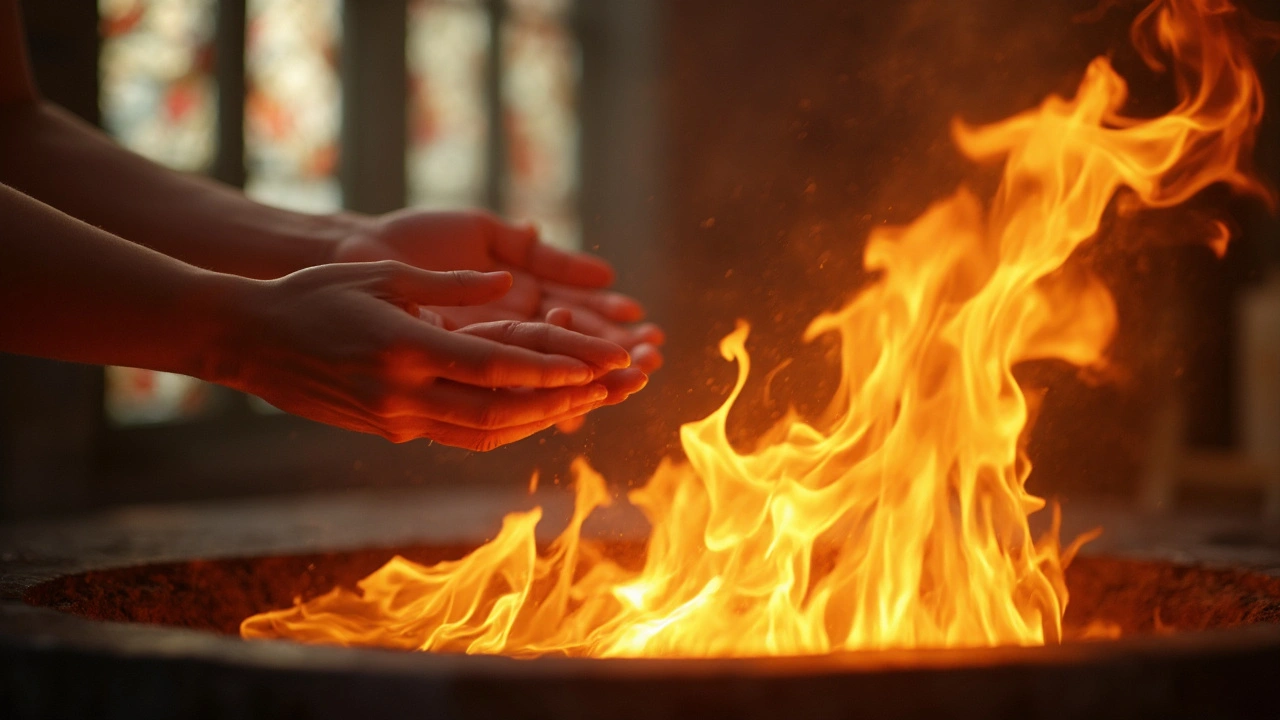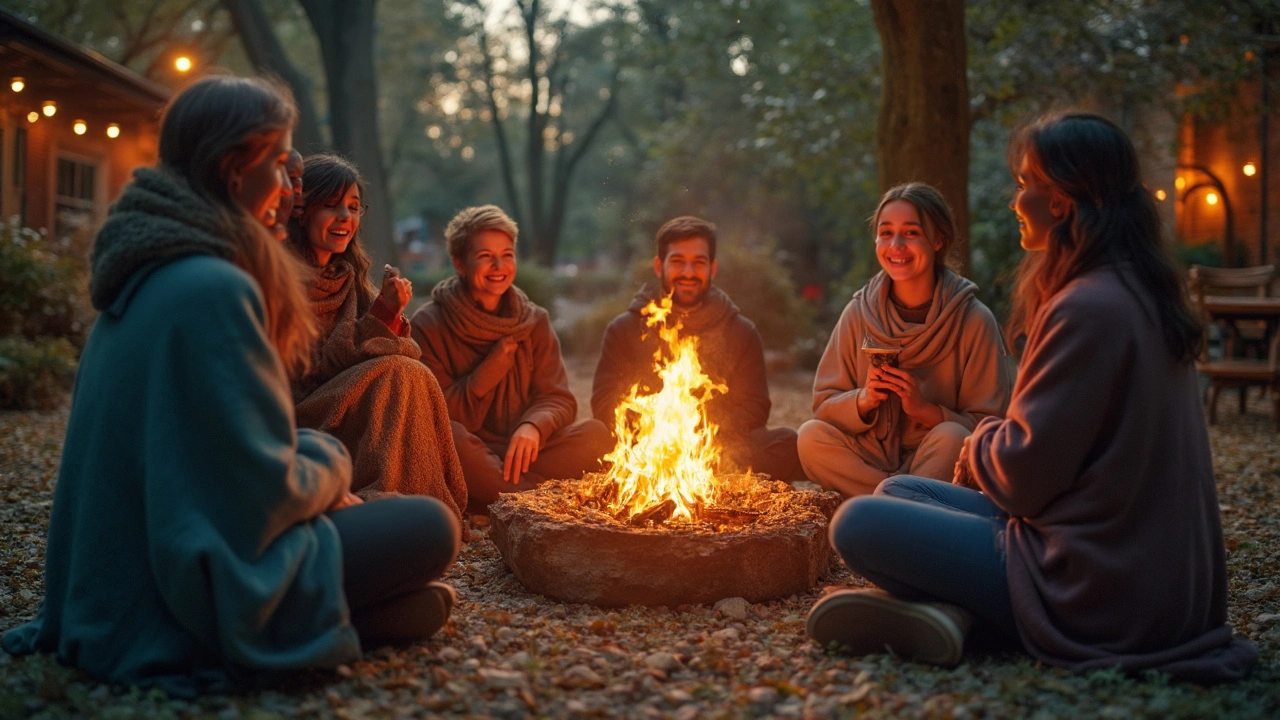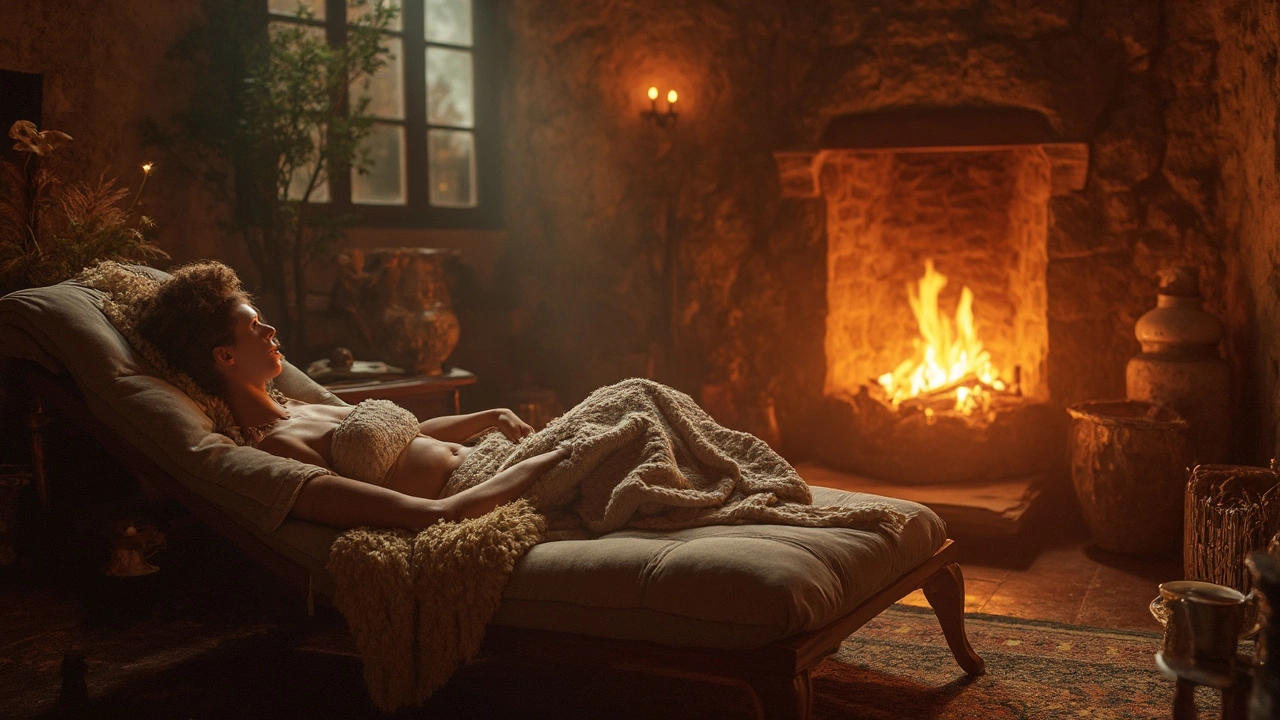The first time I saw someone get a fire massage, I genuinely wondered if they'd lost a bet. I mean, who looks at flames and thinks, "Yeah, go ahead, light me up for relaxation"? Turns out, a lot of people do—because fire massage (sometimes called "huǒ liáo" in Chinese) is one of the wildest and most fascinating wellness techniques you’ll ever come across. What seems like a daredevil act is actually a centuries-old therapy, with roots in China and Tibet. It’s only been popping up in trendy Perth wellness studios over the last two years, but in places like Taiwan and mainland China, fire massage has been part of the health scene since the 1980s. The kicker is, thousands swear by it to relieve aches, boost energy, and melt stress away. Curious? Here’s how this red-hot treatment truly works, what you need to know before you try it and why it just might be the wellness secret you didn’t know you needed.
Fire Massage: The Burning Truth Behind The Hype
Fire massage sounds like something a Marvel villain would cook up, but its foundations are surprisingly scientific—and actually safer than you might think. The basic idea is to use controlled heat and herbal preparations to stimulate healing, much like hot stone massage but with actual flames. The therapist layers a towel soaked in a special alcohol or herbal solution onto your skin (like your back, shoulders, or even thighs), then carefully lights it. The flame burns gently for just a short time—usually less than a minute—while the therapist monitors your comfort and safety every second. Underneath, another damp towel shields your skin. The result is a deep warmth that penetrates tissues, helping loosen tight muscles and kickstart circulation. For those who live with chronic pain—be it from old rugby injuries or sitting at a desk all day—the soothing, spreading heat can unlock tightness in ways that regular massage sometimes misses. There's a fascinating physiological side here: heat stimulates heat shock proteins, which help reduce inflammation and aid recovery. It can also trigger the body's natural production of endorphins—those feel-good chemicals we chase after a good run or a chocolate binge.
Fire massage isn’t exactly mainstream in Australia yet, but curiosity is ramping up fast. A 2024 survey by the Wellness Practitioners Guild in Sydney found that 18% of massage therapists had been trained in fire massage, compared to less than 4% in 2019. And while that’s still a small slice, demand is rising: Perth’s holistic studios report up to a 26% increase in requests this year. So what makes it so compelling? Besides the Instagram-worthy visuals (let's be real), it’s the sense of ritual. You lie back, breathe, and trust in someone skilled enough to handle fire on your skin—not something you do every day. There’s a psychological effect of surrender and trust that’s hard to fake anywhere else. And for wellness junkies who believe in balancing "qi" (the body’s energy flow), fire is thought to drive out coldness and stagnation. This fits with traditional Chinese medicine views, where warming therapies are prescribed for people with sluggish circulation, digestive woes, or even depression.
Yet, there are some important facts to keep in mind. You don’t want a fire massage from just anyone. Proper training is critical; therapists study for years in some Asian schools. In Australia, there’s no strict national certification yet, but reputable therapists usually carry accreditations from organizations like ATMS (Australian Traditional Medicine Society) or have specialized fire massage training overseas. Treatment length varies, with sessions lasting from 30 to 90 minutes, depending on what areas are treated and your body’s needs. Therapists will screen for skin sensitivity or underlying medical issues, so if you’ve got eczema, psoriasis, or blood circulation problems, you’ll need to consult with a healthcare provider before giving it a go. From my experience (and I’ve watched Ariana get one in Bali—she said it felt like "a hot water bottle, but 10 times deeper and oddly relaxing"), the key is to find someone you trust and to jump in with an open mind.
| Country | Fire Massage Prevalence (2025) | Average Session Price (AUD) |
|---|---|---|
| China | Common in urban spas | 60 |
| Taiwan | Very popular | 74 |
| Australia | Emerging | 110 |
| USA | Rare | 130 |

How Fire Massage Works: Rituals, Technique, and What To Expect
Now, if you picture fire massage as someone torching you while chanting, think again. It’s ceremonial, but rooted in method, not mayhem. The session usually starts with a quick chat about your health history—recent injuries or skin sensitivity? New to massage therapy altogether? Your therapist will want a full run-down. You’ll undress to your comfort level, lie on a massage table, and sometimes you’ll get a quick oil rubdown to prep the skin. The tools are simple: thick towels, a fire-proof herbal solution, a flame source (old-school cotton swabs or more modern lighters), and a damp towel barrier between you and the flames.
Here’s the step-by-step breakdown many therapists use:
- Preparation: Therapist checks the room for safety (no stray curtains or papers). Candles are a no-go. Only the fire for the massage is allowed.
- Solution Application: They soak a towel or cloth in a secret-recipe mix—usually grain alcohol, sometimes with Chinese herbs like mugwort, ginger or camphor—and lay it over the chosen body area.
- Fire Barrier: A damp cotton towel under the soaked one keeps skin in the safe zone, and another towel covers areas not getting treatment.
- Ignition: Using a long-reach lighter, the therapist ignites the top towel. The flames flare up harmlessly for 10-30 seconds. It looks dramatic, but you’ll only feel gentle warmth.
- Flame Control: They snuff out the fire with another wet towel, then sometimes repeat the process a couple of times per session or switch to another muscle group.
- Finishing Touches: The area gets a soothing oil massage to lock in the heat and help your muscles relax. Some therapists wrap the body in blankets to deepen the warmth and help you come back down gently.
Contrary to what your logical brain might say, burns are rare. Good therapists hover over you, adjust the duration to your comfort, and check in visually and verbally. According to a 2023 safety audit by Taiwan’s Health Promotion Administration, injury rates were under 0.5%—mostly minor redness, like what you’d get after a hot shower. Of course, that’s assuming you go professional; backyard versions can get unsafe very fast. Even pros have a small fire extinguisher handy just in case, and many clinics have well-practiced exit routes mapped out (don’t worry—they almost never have to use them).
Aftercare is simple but important: hydrate like mad, avoid scrubbing or intense showers for 24 hours, and skip hard workouts until you feel like yourself again. Some folks walk out feeling totally buzzed, others need a solid nap or a snack to rebalance. If you have sensitive skin, ask for a patch test first. A big tip? Don’t book your first session before an important meeting—sometimes your skin will flush, which fades in a few hours but may look a bit wild.
Now if you’re after numbers, Perth clinics report that 64% of new fire massage clients come in chasing relief for tension headaches, muscle stiffness, or chronic fatigue. According to a 2024 questionnaire, 82% of those folks say they felt noticeably lighter or looser after their first session. That number holds steady (79%) among repeat customers. While that’s not quite double-blind, it’s a solid “worth a look” in my book.

Why Try Fire Massage? Real Benefits and Myths Busted
Here’s where things get really interesting. Everyone loves a flashy wellness trend, but does fire massage actually do what it promises? While hard data is still limited outside East Asia, there’s mounting evidence—and plenty of first-hand testimony—for its benefits. Heat is an ancient remedy for muscle pain, but fire massage’s unique combo of warmth, herbal therapy, and touch steps things up. The big win for most people? Immediate, deep muscle relaxation. The flames send warmth as far as 3-4 centimeters under the skin—noticeably deeper than hot stones. It can press out that stubborn tightness you get from gym sessions, long flights (Perth to Bali, anyone?), or marathon workdays hunched over a laptop.
But there’s more to it. Regulars at my favorite local studio say the heat jolt wakes up their bodies, kickstarting circulation and breaking up energy blockages. Studies published in the Journal of Traditional Chinese Medicine in 2022 point to boosted microcirculation, increased production of nitric oxide (a natural vasodilator), and a short-term rise in endorphin levels after fire-based bodywork. These effects do more than just soothe pain; stronger blood flow can help repair tissues, curb inflammation, and make recovery from workouts a heck of a lot faster.
Another big crowd-puller? Stress relief. There’s a meditative, almost hypnotic aspect to the whole process—lying still, focused on breath and warmth, while someone tends flames nearby. For people who struggle to "let go" in typical massages, the dramatic ritual helps distract from mental clutter. I’ve talked to clients who say their minds finally shut off for once, or who walked out feeling weirdly energized instead of sleepy.
What about the risks? If you’re healthy and get treated by a trained therapist, risks are low. Most reported side effects are mild: redness, slight drowsiness, or in rare cases, temporary skin dryness. That said, fire massage isn’t for everyone. If you’re pregnant, have open wounds, or live with heart conditions, give this therapy a miss or talk to your doctor first. Same goes for anyone with anxiety around fire—forcing yourself will just override the whole relaxation angle. For the rest of us, the hardest part is pushing aside that primal “fire bad” reflex and trusting the process.
If you decide to give it a whirl, here are my tips for getting the most out of your *fire massage* experience:
- Research the practitioner—check reviews, ask how long they’ve trained, and make sure they’re certified in fire massage or at least reputable bodywork.
- Be honest about your pain level and medical history—don’t tough it out. Communication is key.
- Show up well-hydrated and avoid heavy meals just before your session. Bonus points if you can clear your schedule afterwards for some down time.
- Embrace the ritual—yes, it might feel strange, but that’s half the magic. Treat it like a mini adventure, not just another appointment.
Fire massage isn’t for everyone, but for the bold (or just the sore), it’s an unforgettable ride to feeling lighter—physically and sometimes even emotionally. It’s a therapy that turns up the heat literally and figuratively on the whole "wellness" experience, and judging by the packed bookings at local spas, it might not be a passing trend. Who knew that playing with fire could feel so good?

